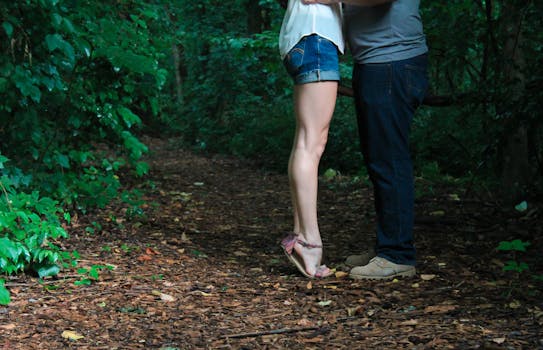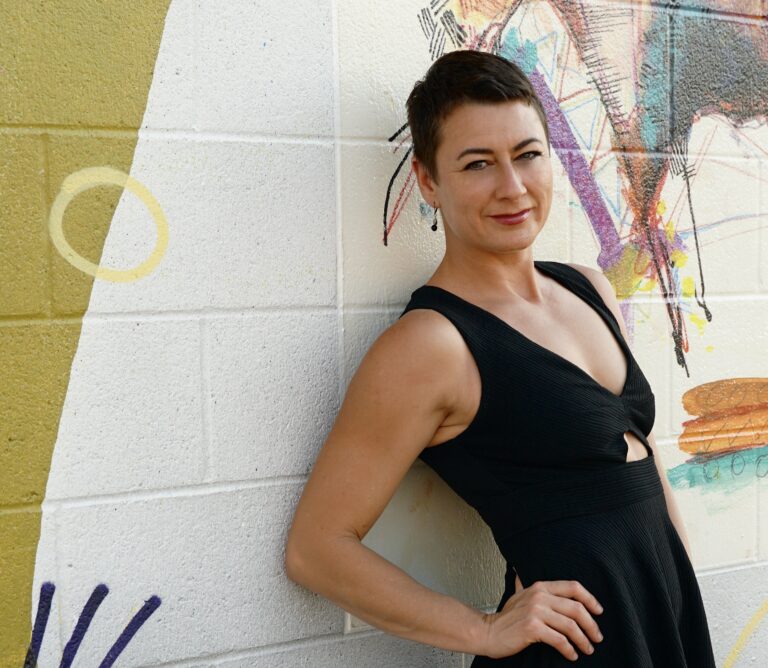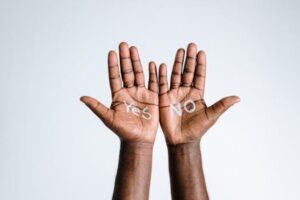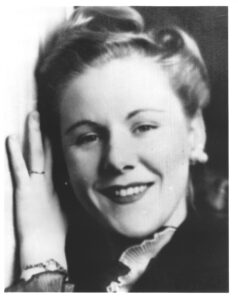I’ve been asked, more than once, in the last few months, what I’m looking for in a partner. Not only have I had trouble answering that question directly, but I’ve also felt a deep resistance to answering. Just under the surface of that avoidance is my long held belief that the perfect partner doesn’t exist and it’s a pointless quest to try to find one. Perhaps there is fundamental truth to that belief–particularly around perfectionism–but I can also recognize when I’m hesitant to pick at the scab of an old wound that has never fully healed.
Coming of age as an American woman, I developed my sense of self in a society that places undue value on presentation and performance, while at the same time compelling me to shrink my truest self through superficiality. The call for hyper-visibility and an equal level of invisibility create quite a juxtaposition. For any person, of any gender, in any partnership construct—it can seem rare and elusive to be truly seen for who you are, beyond the surface, beyond roles, beyond expectations. Deep and resonant recognition can seem as fleeting as a mirage.
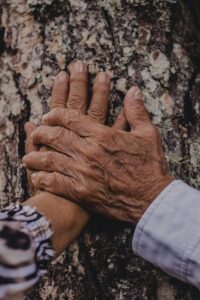 To be raw, and unfiltered, weary and aged, and feel the ease and steadiness of unchanging love–Not hiding our heart in order to be loved, but revealing it fully–is what we crave at our core, what we have longed for from our earliest. Real love is about being witnessed in a way that feels true, freeing, and deeply safe.
To be raw, and unfiltered, weary and aged, and feel the ease and steadiness of unchanging love–Not hiding our heart in order to be loved, but revealing it fully–is what we crave at our core, what we have longed for from our earliest. Real love is about being witnessed in a way that feels true, freeing, and deeply safe.
And yet, despite this longing for real, unwavering love, many of us unknowingly seek out relationships that mirror our earliest wounds. We crave authenticity but often find ourselves caught in patterns that feel anything but free or safe. Why? Because love, for most of us, is first learned in the arms of our caregivers, shaping how we seek, give, and receive it for the rest of our lives.
Some of the most alarming research about love and relationships explores the theme that our primal wounds are what drive our pairing in adulthood. How we attach (or don’t) is related to the relationships we developed in infancy. Our subconscious mind seeks to repeat primitive patterns as if to find a way to resolve unmet needs and engender a different outcome.
Perhaps this understanding is why I fail of being able to produce a coherent version of “ideal mate.” I inherently know, deep down, that I have a this unconscious drive toward partnerships that will reopen my core wounds; that what appears to be ideal might, in fact, just be bait and switch. The conundrum is that true healing takes place within the context of relationship. Secure attachment can only be developed in safe partnership. The fundamental question becomes: how do we heal our core wounds so that we can stop being driven to relationships that are going to trigger our deepest pain and awaken needs that aren’t going to be met?
Therapists and researches have written volumes on this subject and I’m no scholar, just a human living through the experience over and over again and pausing each time to reflect and observe and ponder. What feels truest on this journey of finding True Love is that we come home to ourselves first, finding and honoring our True Self.
The more I learn self-compassion and acceptance,
…the more I learn to acknowledge my needs,
…the better I get at honoring my own boundaries with myself,
…the less I tolerate anything less from an other.
At the end of the day, all of our relationships are just mirrors reflecting ourselves back to us. As within, so without.
When I encounter friction in a relationship dynamic, my first step is to get curious and go inward, to examine what I believe about myself. I take wisdom from the adage: Any time you point the finger, there are 3 fingers pointing back at you. I seek to unearth what is being reflected back to me. I beg the inner question, “what do I believe to be true, about myself or the world, in order for me to be in a relationship dynamic that feels this way?” Your beliefs are simply rules you have agreed to live by. Outside of who is right and who is wrong, what unspoken rules are being agreed to in this situation?
NOTE: It is important to distinguish between blaming yourself for unacceptable treatment and reflecting on why you tolerate it in the first place. I am not condoning enduring unsafe or emotionally damaging behavior. You are not broken and there is not something wrong with you for repeating patterns. The point of this self-reflection is to build awareness, not to self-recriminate.
 The best solution to this magnetic draw to our early-trauma-alter-ego, that I’ve come to understand, is a process called re-parenting. In over-simplified terms, re-parenting is a therapeutic process in which we learn to become the caretaker of ourselves. In this process we visualize giving ourselves the love and compassion and support that may have been lacking at key times throughout our formative years and beyond. The goal is to learn to love ourselves in all the ways that we crave love from another. If we fear abandonment or rejection or criticism from a partner, we build awareness of the ways we continue to abandon, reject, and criticize ourselves. We start to reprogram this unconscious drive to fill unmet needs by re-parenting our wounded inner child and learning to identify and meet those needs though self-compassion and self-love.
The best solution to this magnetic draw to our early-trauma-alter-ego, that I’ve come to understand, is a process called re-parenting. In over-simplified terms, re-parenting is a therapeutic process in which we learn to become the caretaker of ourselves. In this process we visualize giving ourselves the love and compassion and support that may have been lacking at key times throughout our formative years and beyond. The goal is to learn to love ourselves in all the ways that we crave love from another. If we fear abandonment or rejection or criticism from a partner, we build awareness of the ways we continue to abandon, reject, and criticize ourselves. We start to reprogram this unconscious drive to fill unmet needs by re-parenting our wounded inner child and learning to identify and meet those needs though self-compassion and self-love.
Somewhere along the way we got this memo that love of self is reserved only for the vain and conceited and that self-effacement is the way of the saintly. Unfortunately, none of us have attained to sainthood through sacrificing and people pleasing, instead we have drained our wells, burned out, and nearly ruined our health in trying to win approval. The golden rule admonishes us to love others as we love ourselves. It’s no wonder our relationships are so dysfunctional–the way we love ourselves is often abysmal. If our cup is empty, we have nothing to give.
As I’m re-parenting and working my way through identifying and naming my needs, I’ve become rather weary of striving to curate an acceptable version of me. I prefer to approach life and love and romance Flaw Forward. Flaw Forward–not as a way to resign myself to my worst attributes, but as a way to own my whole self and show up as her—flaws, quirks, contradictions, and all. But I first have to be comfortable with this version of me–to sit with her, make space for her, to accept her fully.
I can’t expect a single person to love this fabulously flaw forward version of myself unless I learn to love it. I stop evaluating myself based off of how well I fit into someone else’s expectations. I integrate and honor my raw, real, radiant humanity. I become my own safe place and I put a moratorium of seeking another’s approval to validate my worth. I neither have to shrink nor over-perform to be loved; because I love me first and best, as I am, and that is enough.
love it. I stop evaluating myself based off of how well I fit into someone else’s expectations. I integrate and honor my raw, real, radiant humanity. I become my own safe place and I put a moratorium of seeking another’s approval to validate my worth. I neither have to shrink nor over-perform to be loved; because I love me first and best, as I am, and that is enough.
I become the one who is fully present for me–through the weariness, through the aging, through the flaws and blemishes, witnessing and embracing my entire self with compassion, grace, love, and even joy. I can trust myself to never abandon me again.
Ironically, I think that’s what draws in truer and deeper connection with others. Because I am safe in myself, I can then allow myself to show up fully.
No longer being invisible gives me the opportunity to be seen in the truest sense, and be valued because of who I am, not in spite of it. True worth isn’t something that needs to be earned or showcased. It just is. Embodying true worth means no longer seeking permission to exist as I am. It is the quiet confidence of knowing I am enough—flaws and all—without performance or pretense. I no longer search for love from another to complete me, but to reflect the love I already hold within.

